|
Article of
Ancient Wenzhou from the Chinese National Geography Magazine, Jan 2006
 |
click on the picture to read the full article |
The Kingdom of Eastern Ou
Wenzhou before the first Century Bc
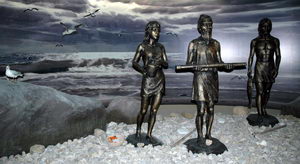
About
five thousand years ago, a troop of the ancient Yue people settled down
on the sloping fields with hills behind and the sea in front at themiddle and lower reaches of the Oujiang and Feiyun Rivers, and led a
life of fishing and hunting combined with primitive farming. At the
beginning of the fith centuryBc, the state of Yue founded the Kingdom
of Eastern Ou here. In 138 BC, the Kingdom of Eastern Ou was forced to
move inland to Lujiang Prefecture in the Huai River valley under the
pressure of Prince Yue of the Fujian Kingdom and the Ou people who left
behind on the native land gradually merged themselves with the Han
culture. With the establishment of the local organs of the Han
Government, the district began to come under the jurisdiction of the
imperial court.
Ou People of Remote Antiquity.
The
Ou people are a branch of the Baiyue nationality, living on the sloping
fields at the foot of the mountain and beside the stream and with the
vast ocean in front. Cutting hair short and tattooing bodies, dressed in
felt and stripped of left sleeves, they were regarded as barbarians by
the people of the Central Plains. However, they kept in contact with the
central imperial court of the North and presented the emperor of the
Zhou Dynasty with their own special local products fish-skin sheath,
fish sauce and sharp sword as gifts.
|
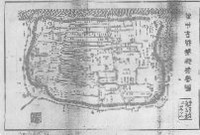 |
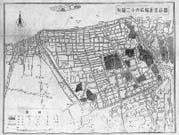 |
|
Wenzhou map 1934 (click
to enlarge) |
Wenzhou map 1936 (click
to enlarge) |
Ancient Wenzhou
The Eastern Ou District Under The Jurisdiction of
the Imperial Court
Since
it came under the jurisdiction of the imperial court, the eastern Ou
district had made great progress in economy and culture. On this stretch
of land which was not plentiful in natural resources, the handicraft
industry and trade occupied an important position in economic formation
and the porcelain making, shipbuilding, spinning and weaving,
papermaking and lacquerware process enjoyed high reputation throughout
the country. With the development of the “Silk Road of the Sea”, Wenzhou
became an important coastal city of business and trade. Under such a
background appeared the southern opera the first drama in China, and the
“Yongjia School”, which advocates achieving success in pragmatic
approach. During the Ming and Qing Dynasties because of the interference
of the government in economy, severe ban on maritime trade and invasion
and harassing of Japanese pirates, the industry and commerce in Wenzhou
became declined and the flourishing culture turned to a lifeless state.
In
675, the government of the Tang Dynasty separated out two counties
Yongjia and Angu and set up Wenzhou Prefecture. ”Wenzhou” ( warm city)
was so called because it was warm all the year round. In the Tang
Dynasty Wenzhou had four counties, Yongjia, Angu, Yuecheng and Hengyang,
under it`s jurisdiction. As over 1.300 years have passed, the name
Wenzhou is still kept in use and the area under it`s jurisdiction also
fixed in the main.
In
the Tang and Song Periods, especially when the royal families of the
Song Dynasty crossed over to the South, the population in Wenzhou
increased sharply to as many as one million. The large population with
relatively little land resulted in the great pressure of survival and
also brought about the driving force for exploring the way forward,
which led the Wenzhou people onto the road for the development of
industry and commerce. With superb skills, the Wenzhou engaged in the
production of porcelain, ship, textile, paper and lacquerware, creating
the nationally known handicrafts and developing the richly characterized
civilization in farming and trade and culture for townspeople.
The
beautiful scenery of Yongjia carries with itself a strong spiritual
atmosphere of Buddhism, so that the ancient Wenzhou culture shows a
picture of Buddhism coming before Confucianism. The earliest recorded
work in Wenzhou is the “Collected Works of Yongjia” written by Monk
Xuanjue of the Tang Dynasty. His method of Buddhist meditation,
including both instant and gradual realization of truth, produced a
significant influence on the Tiantai and Chan sects of Buddhism, and his
Buddhist thinking of improving secular life, which has a tint of
utilitarianism, gave a great inspiration to the later Yongjia school.
Yongjia School is an important independent school in the Confucian
Schools of idealist philosophy of the Song Dynasty. With Zhou Xingji,
Zhen Boxiong, Xue Jixuan, Chen Fuliang and Ye She as the
representatives, it vigorously promotes the down-to-the-earth approach
and advocates equal stress on industry and commerce and agriculture. The
doctrine, which proposes achieving instant results in work and attaching
importance to merchandising, has produced a significant impact on the
development of economy and culture in Wenzhou and given a great impetus
to such applied subjects as agriculture, medicine, astronomy and
military affairs. To some extent, it has created influence throughout
the country and even within the whole world.
|
Wu ma street1938 |
Wu ma street1938 |
Modern Wenzhou
After the Establishment of the Foreign Trade Port
In
1876, after the signing of the Sino-British Treaty of Yantai, Wenzhou
was opened up as a trading port. Since then, the imported goods had been
ceaselessly poured into Wenzhou and the branches of many foreign
companies successively set up here. At the beginning of the twentieth
century, Wenzhou had been a costal city inhabited by quite a number of
foreign businessmen. The great dumping of foreign commodities
accompanied by the cultural invasion stimulated the development of the
commodity economy of Wenzhou and made an impact on the ideology of the Wenzhou people as well. Under the new circumstances, the Wenzhou people
carried forward the historical tradition of handicraft industry and went
in for the intensive production of small commodities, and also some of
them left their native place and ventured out into the whole world.
|
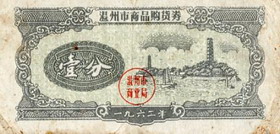
Wenzhou food ticket 1962
(front) |
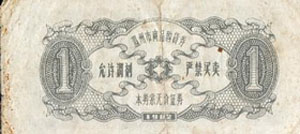
Wenzhou food ticket 1962
(back) |
Case Involving Foreign Missionaries in 1884
The
Introduction of Christianity into Wenzhou has not only brought along the
Western Culture, but also created the sharp conflict between Chinese and
Western culture. A number of missionaries arbitrarily pursued the
concept of value in Western culture and even bullied and oppressed the
masses in collusion with the local officials. With the deepening of
imperialist invasion, the masses finally flew into a great rage against
church, resulting in the occurrence of.
At
the end of the nineteenth century, a number of factories for processing
products with machines sprang up in Wenzhou. Following the establishment
of the first tea factory in 1893, Wenzhou successively set up the
factories of soap making and cloth weaving at the beginning of the
twentieth century. After the Revolution of 1911, the mass enthusiasm for
running factories was on the upsurge. By the beginning of the thirties
Wenzhou began to enter the stage of prosperity in economy.
Three Distinguished Thinkers in Wenzhou, Chen Qiu,
Song Shu and Chen Fuchen
Chen
Qiu (1851-1904), born in Ruian, was a successful candidate in the
provincial-level imperial examination in the Guangxu Reign of the Qing
Dynasty. Chen Qiu, Song Shu and Chen Fuchen were collectively called
“three masters in the eastern part of the Oujiang River valley”. He
initiated political reform and self-strengthening and proposed
establishing parliament, founding factories, developing industry and
commerce, building railways and transforming civil service system. He
was one of the most distinguished reformists at the time and also one of
the founders of Wenzhou Liji Hospital the first modern hospital of
traditional Chinese medicine in China. His posthumous work is “Collected
Works of Chen Qiu”.
Song
Shu (1862-1910), born in Pingyang, was acclaimed as prodigy in his
childhood. He was one of the distinguished representatives of the reform
movement. His posthumous work is “Collected Works of Song Shu”.
Chen
Fuchen (1859-1917), born in Ruian, had a record of successful candidate
in the highest imperial examinations. He was the distinguished
educationist, statesman and scholar in China in modern times. During the
period of the constitutional reform and modernization, he founded Liji
School in Wenzhou. He had been engaged in educational work for a long
time and appointed tutor of Yangzhen Private School and professor of
Beijing university. In 1909 he was elected president of Zhejiang
Consultative Bureau and member of the Parliament after the founding of
the Republic of China. His works are “On Commerce”, “General History of
China”, An Introduction to Ancient Philosophers”, “Philosophical History
of China” and others.
The “May 4th Movement”
in Beijing spread to Wenzhou. On June 4, 1919, the students of
Zhejiang Provincial 10th Middle School, the 10th
Normal School, the privately-run Yiwen School and the Senior Commercial
School announced strike and held a demonstration, and the people along
the road spontaneously launched the campaign of boycotting Japanese
goods. The “May 4th Movement” exerted far-reaching influence
on the construction of culture in Wenzhou.
After the July 7 Incident,
Wenzhou had been occupied by the Japanese army for three times (in April
of 1941, July of 1942 and August of 1944). During the third occupation,
the activities of resistance against Japanese aggression began to be
organized in Wenzhou. In the period of the War of Liberation, the
Wenzhou local Party organization organized and launched the extensive
guerrilla war, supported the peasants in the campaign for the reduction
of rent and interest and the urban residents and students in the
patriotic democratic movement and ushered in the liberation of Wenzhou
together with the Wenzhou people.
|
Click on the picture to see
a postcard set of old Wenzhou photos
|
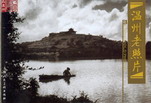 |
|

Wenzhou birdview 1984 |
|
